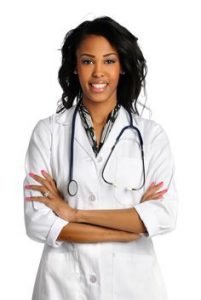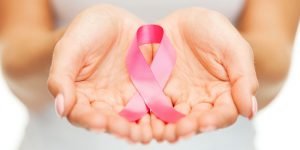Attention Ladies: Everything You Need to Know About Breast Cancer

The threat of breast cancer is well known these days . Without any scintilla of doubt, breast cancer is one of the deadliest diseases in existence that ravages the human population at an alarming rate. This killer disease claims more than 6 million human lives every year.
The disease starts to develop when cells in the breast begin to grow out of control, These cells are usually from a tumor that can be seen on an X-ray. If the tumor is malignant (cancerous), it will eventually grow into the surrounding tissues or will spread to distant areas of the body. It is very important to understand that in most cases breast lumps are not cancerous: they are benign. Benign breast tumors have abnormal growths, but they do not spread outside of the breast and they are not life threatening.
BREAST CANCER HEREDITARY FACTORS

In most cases, doctors recommend that a person with a strong family history of breast cancer should have a blood test done to help identify specific mutations in BRCA or other genes that might have been passed on genetically.
Similarly, a genetic counselor to review the family health history may be recommended if breast cancer is hereditary. Breast cancers of various forms have been identified over the years, depending on the affected area which could be ducts, lobules, or tissue.
HEALTH CARE INSURANCE FOR BREAST CANCER
The health care insurance scheme is the best avenue for anyone who develops the disease, because long term treatment for the disease can be financially devastating.
Therefore, it is very important to be involved in a health care plan that offers accurate screening to an early detection and a comprehensive treatment of breast cancer if needed.
Understanding the health care provider’s policy and their coverage is a necessity for those at risk.
CAUSES OF BREAST CANCER
It’s not clear what causes breast cancer, but doctors know that breast cancer occurs when some breast cells begin to grow abnormally. These cells divide more rapidly than healthy cells do and continue to accumulate, forming a lump or mass.
Researchers have identified hormonal, lifestyle, and environmental factors that may increase your risk of developing breast cancer. But it still remains unclear why some people who have no risk factors develop cancer, yet other people with risk factors never do. It’s likely that breast cancer is caused by a complex interaction of your genetic makeup and your environment.
PREVENTING BREAST CANCER

1. Early detection – Early detection means that you need to know the look and feel of your breasts in a normal situation so you can pick up any change or deviation, no matter how small. Your breasts undergo many changes in your life as a result of hormonal changes during menstruation, pregnancy, breastfeeding, menopause, and fluctuation in body weight. In most of cases, any lumps that appear will be benign, but in any case you must report them immediately to your doctor and make sure that your response is serious.
2. Getting examined regularly – It is important to contact a surgeon with experience in breast examination for periodic review.
3. Knowing your risk factors – Getting familiar with your family’s cancer history is important in the prevention of breast cancer formation.
4. Consistent breastfeeding – Studies have shown that consistent breastfeeding dramatically reduces the chances of developing breast cancer.
5. Limit hormone therapy – Introducing additional hormones to your body is always a risk. One of the many possible side effects is developing breast cancer, so keep that in mind before considering hormone therapy.
6. Eating right – Maintaining proper nutrition may help prevent the development of the disease.
Warning signs that are worth monitoring
It is worth noting the following changes:
*Breast size changes (one or both)
*The appearance of a lump or thickening on the breast or armpit that is felt differently from the normal breast structure
*Shrinkage or formation of dimples on the skin in the breast area
*Swelling of the armpit or around the collarbone (where the ligaments and lymph nodes are located)
*Exceptional effects on the mammary: skin peeling, withdrawal, thickening, or secretion
*The appearance of redness and lumpiness on the skin of the breasts
*The appearance of swelling in the breast
*The formation of ulcers on the breast surface
*Varicose veins on the breast
*Persistent pain in the breast or underarms
*Dermal discharge from the mammary
*Quick change in the appearance of one breast
*Condensation, heaviness or enlargement of one breast
*Change in breast color
*Unusual warmth of the breast
*Bumps on the skin that make the breast look like orange peel
*Itching
*Pain
*Flattening or flipping inward of the mammary
*Cracks in or swelling of the mammary, changing the coronal color
It is important to distinguish between natural and healthy congestion and an unfamiliar lump in the breasts. Natural congestion in the breast is defined as hard (it has bumps resembling the blocks in a cottage cheese). A lump, however, can be small or large, soft or hard, and has clear boundaries. It may be close to the skin’s surface, deep and close to the ribs and chest, mobile or fixed in one place.
Breast health awareness during your adult life is an essential part of taking responsibility for your body and life.
Source: Read Full Article

